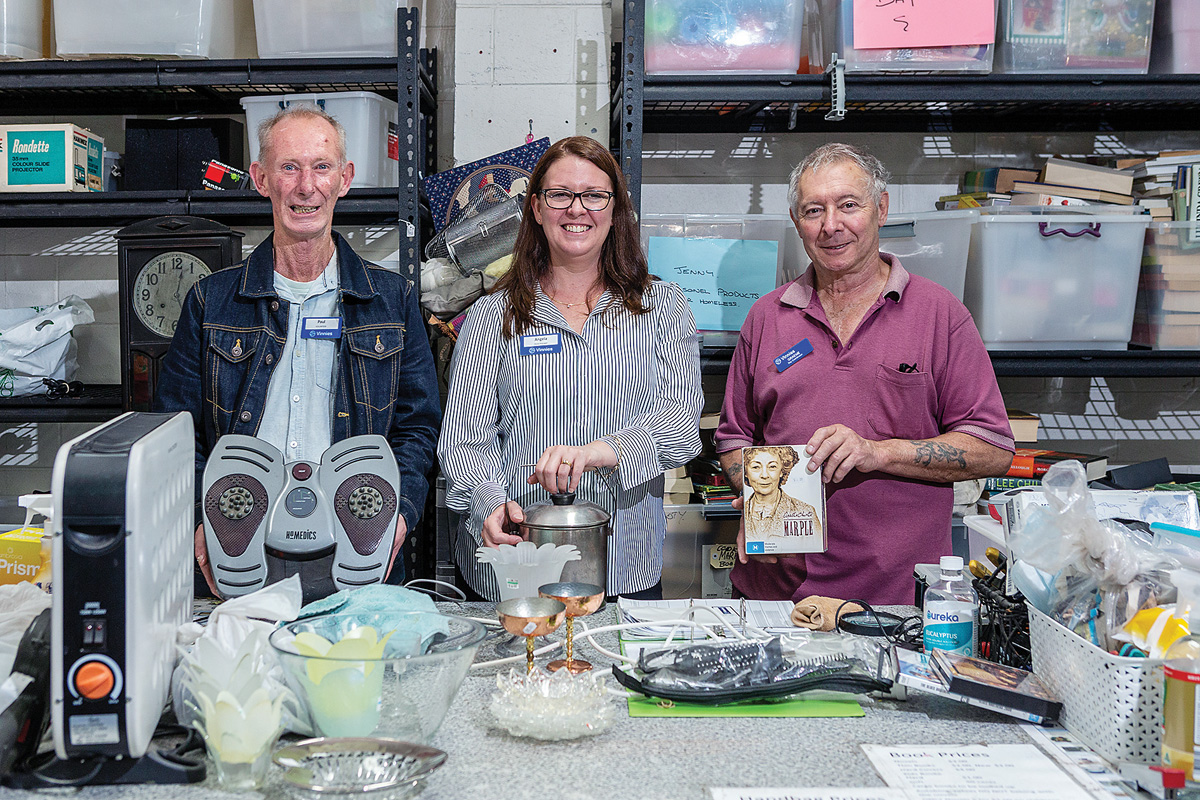MORNINGTON Peninsula residents are being warned that leaving donations outside closed shops or full bins over Easter could lead to them being captured on CCTV and fined.
According to the waste watch group Keep Australia Beautiful Victoria, around 90 per cent of all donations left outside charitable stops or recycling bins end up in landfill because they are damaged or soiled.
Vinnies general manager Jeff Antcliff says that although peninsula residents are getting better at reducing this waste, there is still a long way to go.
“Over the past five years we have had a reduction on things being left unattended at our shops on the peninsula, and I’d like to thank residents for that, but it’s about continuing that education process,” he said.
Mr Antcliff said well-meaning people went to a lot of trouble to launder and fold and pack good for donations, only to leave it unattended, where it often became soiled by weather or blown around.
“We are trying to get the message of reuse and recycle and part of that message is only leaving donations at open stores, or placing inside a donation bin,” he said.
Dumping donations actually results in op shops and recycling shops having to foot the hefty disposal and landfill bill, estimated to be around $3.4 million a year.
Given that Easter and key holiday periods are when the bulk of donations happen, Keep Australia Beautiful Victoria says a lot of clothing, household textiles and other items may not get a new lease on life or benefit those in greatest need if left outside a closed store.
KABV’s Travis Finlayson said people often see donations left outside op shops, and so believe they are doing the right thing by adding to the piles.
“Alternatively, they decide to press on and head to the clothing recycle bin hub at their local shopping strip or train station. The bins there are already filled to overflowing so they deposit their items in a tidy pile next to the bin,” he said.
“Without realising it and in both scenarios, they have left their donations exposed to being rifled through, picked over and what is not stolen, scattered about in messy, windswept piles of litter, open to the elements.
“This often means those quality items are no longer saleable and most likely end up in landfill.”
According to Mr Finlayson an increase in CCTV outside charity stores and at clothing bin hubs across Melbourne has seen a significant increase in signs warning people off donating out of hours or outside bins.
Some stores have resorted to installing barriers or blocking off the front entrances to stop donations to closed stores while a growing number of councils are now contemplating reducing the number of resource recovery bins because they have become too difficult to manage.
Mr Finlayson said the increased surveillance had resulted in a growing number of donors being issued with fines to reduce the number of donations ending up in landfill.
“However, it is important to point out that we are not ‘enforcement happy’ and that enforcement is very much the last resort. Rather we are trying to ensure that donations have a positive impact on our circular economy,” he said. “So, my big plea to all the wonderful donors out there: Let’s aim at diverting as much as we can from landfill this Easter. Let 2022 be a critical turning point and the moment where we all do our bit towards building a true circular economy.”




